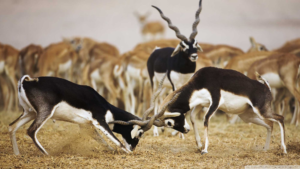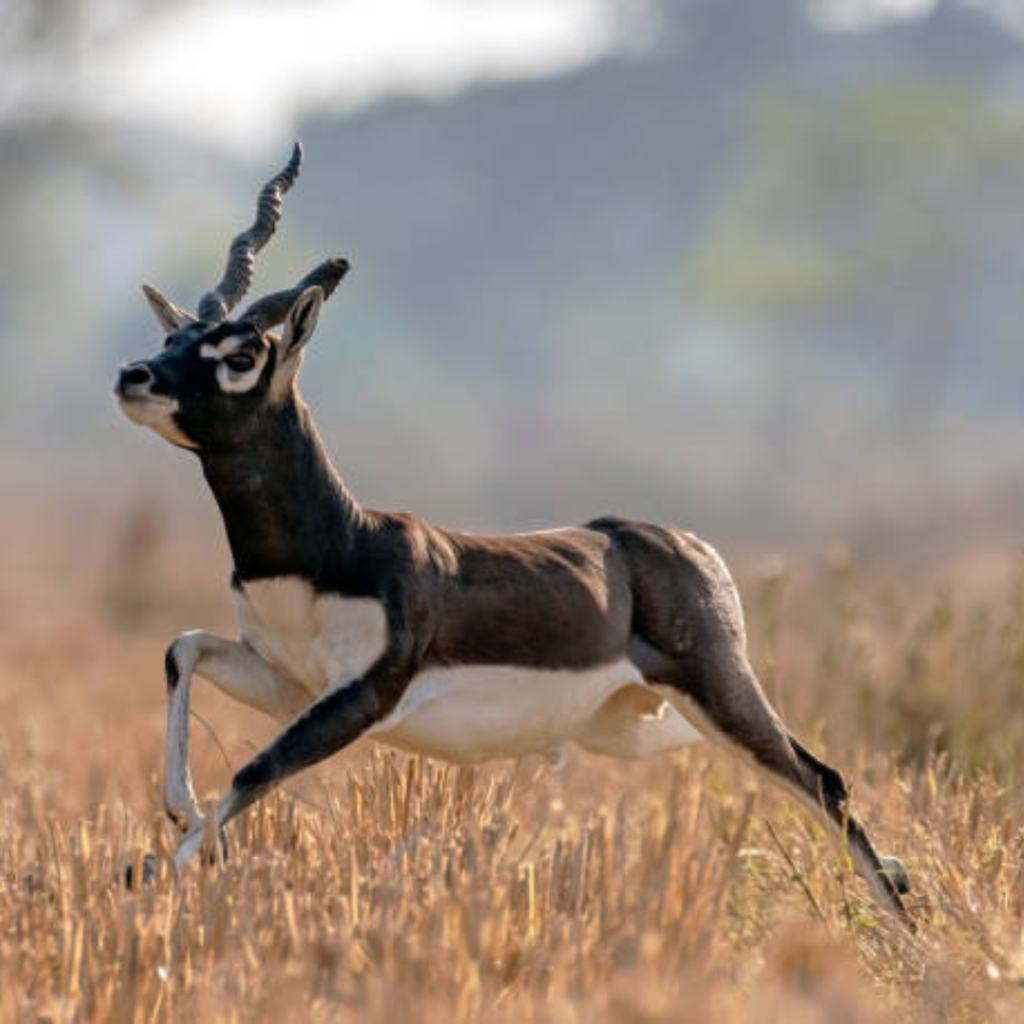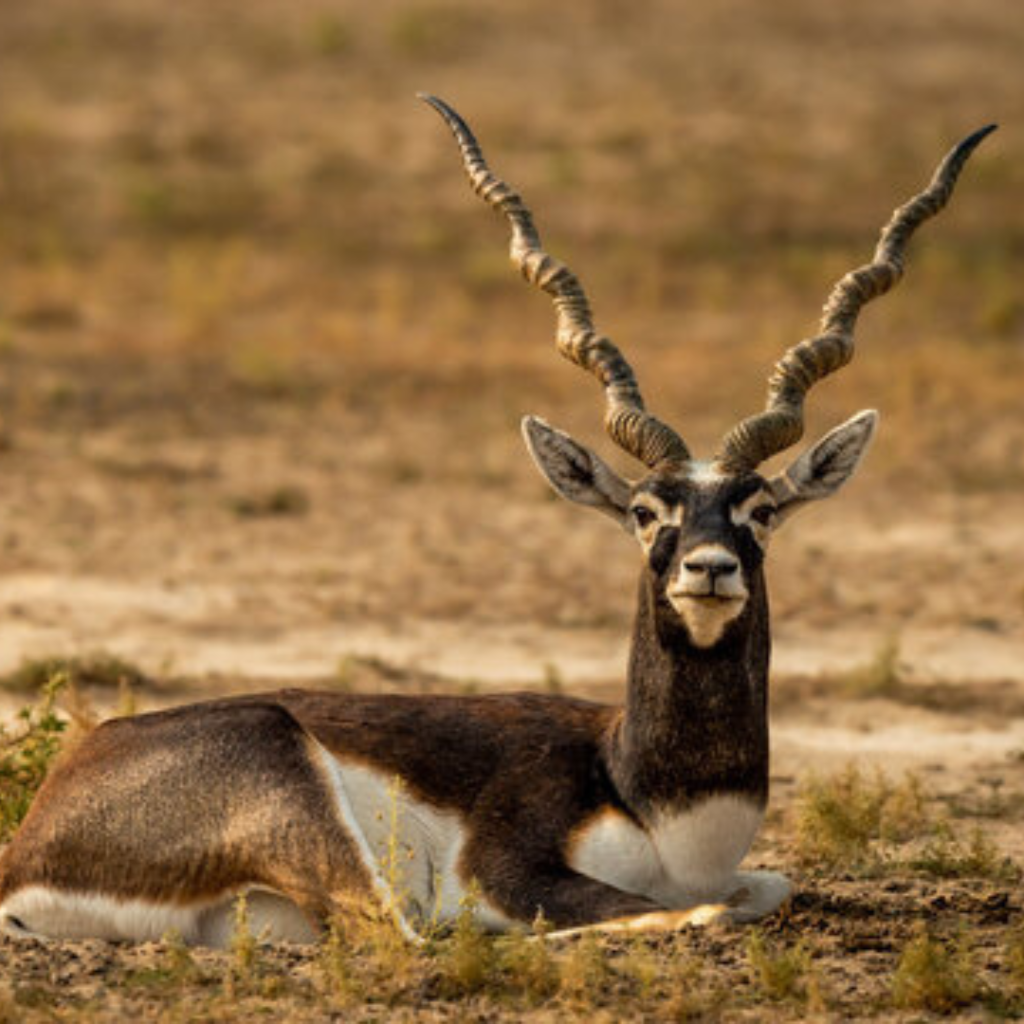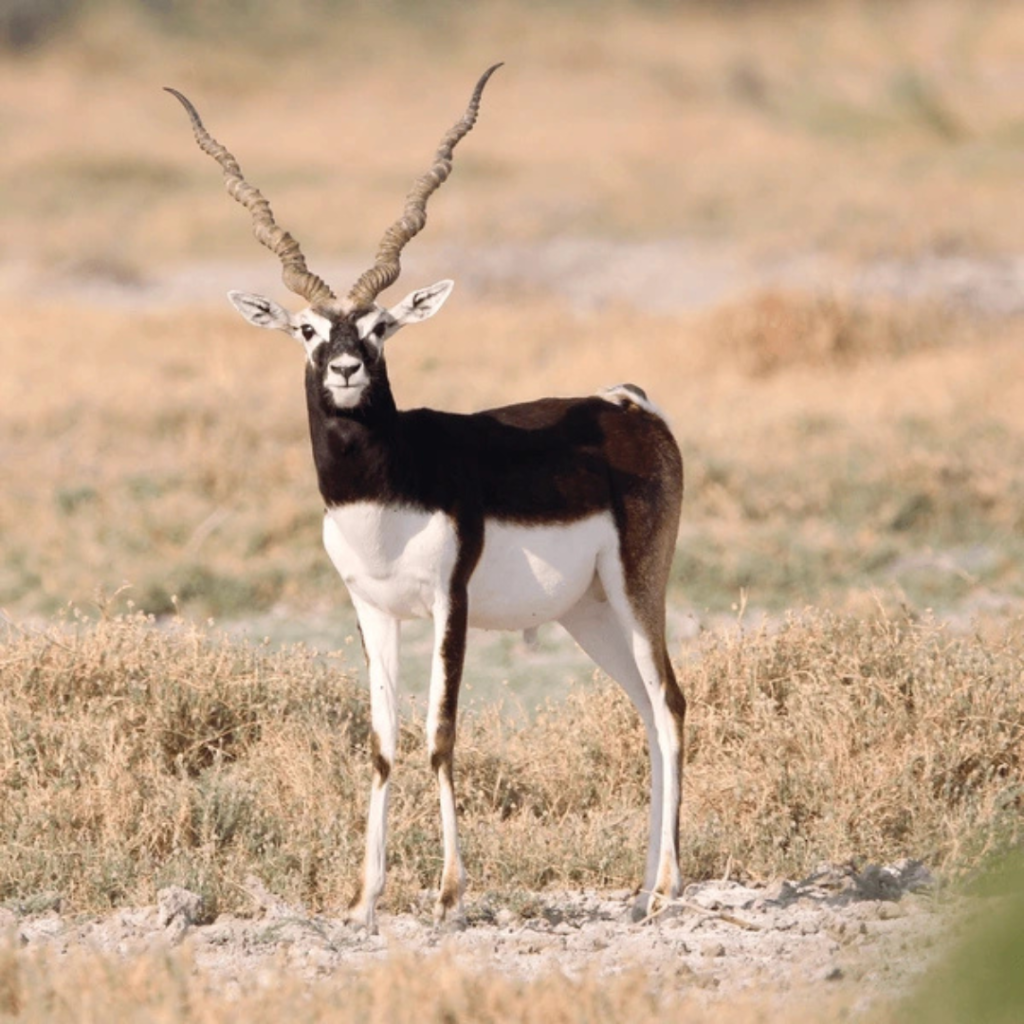
Blackbuck
A graceful antelope known for its striking spiral horns and swift movements across open plains
Conservation Status | Regionally Extinct (Extirpated)
Known locally as “Kala Hiran” (کالا ہرن), the Blackbuck is native to the Indian subcontinent. In Pakistan, it was once abundant in regions like the Cholistan Desert and Tharparkar. However, due to excessive hunting and habitat loss, the species became extinct in the wild by the late 20th century. Conservation efforts have since been initiated to reintroduce and protect this elegant antelope within the country. While the Blackbuck is extinct in the wild Pakistan, conservation efforts continue in captivity to protect and restore its populations.
Habitat & Lifestyle
Blackbucks thrive in open grasslands, semi-desert areas, and lightly forested regions. They are diurnal animals, primarily active during the early morning and late afternoon. Living in herds, they exhibit a social structure where dominant males maintain territories and oversee groups of females. Their diet mainly consists of grasses, herbs, and pods.
Area Found
Currently, Blackbucks in Pakistan are found in controlled environments and wildlife reserves. Notable locations include;
Lal Suhanra National Park | Bahawalpur | A significant site for Blackbuck conservation and breeding programs.
Mehrano Wildlife Sanctuary | Khairpur | Home to a protected population of Blackbucks within a privately preserved forest.
Fort Abbas Enclosure | Cholistan Desert | A 10 km² area where Blackbucks have been reintroduced to semi-wild conditions.
Kamalia Wildlife Park | Toba Tek Singh | Hosts a small number of Blackbucks as part of its wildlife exhibits.
Quick Facts
- Size: Shoulder height ranges from 74 to 88 cm.
- Weight: Males weigh between 34 to 45 kg; females between 31 to 39 kg.
- Appearance: Males possess dark brown to black upper bodies with white underparts and long, spiral horns measuring up to 60 cm. Females are lighter in color and usually lack horns.
- Predators: In their natural habitat, predators include wolves, jackals, and stray dogs.
- Unique Fact: Blackbucks are among the fastest antelopes, capable of reaching speeds up to 80 km/h (50 mph), making them adept at evading predators.




Did you spot a mistake or have more to add? Let us know!
Your feedback helps Haewan keep information accurate and up-to-date.
